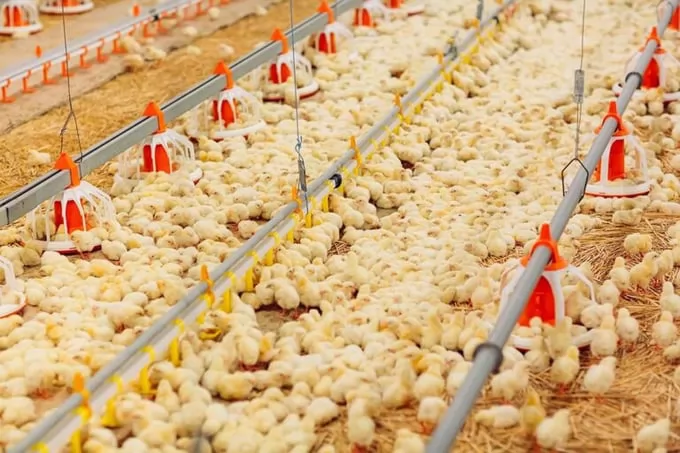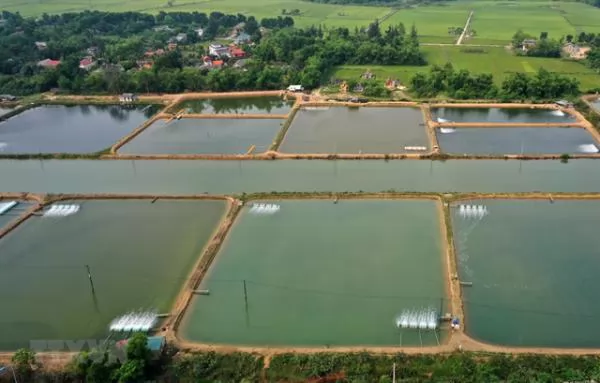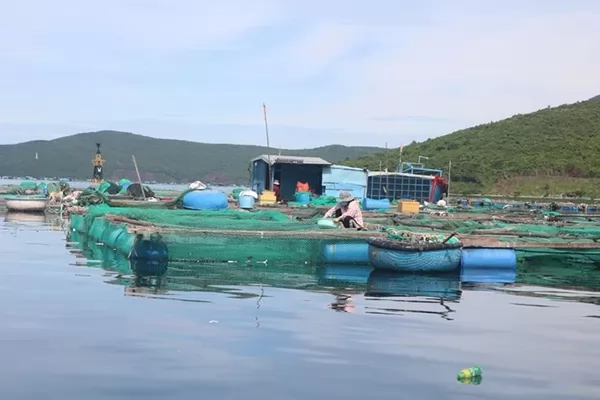A swine of the times - pig production down in An Giang Province

Diseases and falling pig prices are causing difficulties for pig farmers in the southern province of An Giang. — Photo baoangiang.com.vn
AN GIANG — Pig breeders in the southern province of An Giang are struggling to deal with the combined impacts of the COVID-19 pandemic, diseases in herds and falling pig prices.
There are only about 178,000 pigs in the province currently, 60 per cent of numbers before the outbreak.
Nguyễn Thanh Đức, Director of the Sub-Department of Animal Husbandry and Veterinary Medicine in Kiên Giang Province, said the resurgence of the COVID-19 pandemic badly affected livestock production and the market. Prolonged social distancing affected veterinary work, vaccination and disease prevention on livestock and poultry as vets could not get to farms.
Furthermore, in some localities, African swine fever has re-emerged, forcing the price of live pigs even further down and causing farmers to heavy financial losses.
After the outbreak of African swine fever in the province in 2019, many small farming households stopped raising pigs, causing a sharp decline in the total pig population.
African swine fever was first reported a few months ago in a commune in Châu Thành District. The disease has since spread to 16 communes, belonging to six districts and cities, including Châu Thành, An Minh, Hòn Đất, Tân Hiệp, Vĩnh Thuận and Rạch Giá.
Đức said that in the first nine months of this year, live swine prices fell sharply. In March and April, live pigs cost VNĐ70,000–75,000 per kilo. In August and September, the price decreased to VNĐ42,000-50,000 per kilo, and prices were just VNĐ35,000-45,000 per kg this month. In some areas, the prices were even lower.
Trương Kiến Thọ, Deputy Director of An Giang Province’s Department of Agriculture and Rural Development, said that after the social distancing eased, the veterinary force stepped up disease prevention on livestock and poultry to restore production to serve the year-end market.
Due to African swine fever, the total pig population in An Giang Province decreased drastically, though numbers have recently begun to increase slowly.
The province also has around 68,700 buffaloes, an increase of 1,000 heads, and more than 64,000 cows, an increase of 900 heads.
The poultry herd now has more than 4.9 million heads, an increase of 100,000 heads mainly due to the increase of duck population which is now more than 3.6 million heads.
However, now, live hog prices have decreased by VNĐ20,000 to VNĐ25,000/kg over the same period of last year.
It is forecasted that by the end of 2021, when COVID-19 prevention and control measures are loosened, the price of live hogs will be stable again due to the high demand at the end of the year and the new Lunar New Year celebration.
“A good thing now is that An Giang has many businesses and livestock households that apply biosecurity measures. They also have expanded their livestock production to increase quantity and quality,” Thọ said.
For example, in An Giang Province, TH Group has started a hi-tech dairy project, the most modern of its kind in the Mekong Delta. The project has led many businesses to invest in cow farms.
Buffalo and cow farming has shown signs of recovery, thanks to an increase in the area of self-growing pastures and the use of agricultural by-products.
In addition to protecting livestock and poultry through periodic vaccinations, An Giang also developed plans for livestock and poultry development until the end of 2021, with priority given to biosecurity measures.
The agricultural sector will connect farmers with businesses in and out of the province to find a market for livestock products.
The locality encouraged the restructuring of the livestock industry, switching from smallholder farming to centralised farming and focusing on efficient and sustainable biosecurity measures.
Minister of Agriculture and Rural Development, Lê Minh Hoan, said that to maintain production and ensure stable growth it is important to strengthen the production and consumption links, supported by policies for co-operatives, cooperative groups and farms in expanding their market.
As a result, products can be directly delivered to consumers through available distribution systems.
The ministry will guide livestock farming households on how to use locally-made feed ingredients such as bran, corn and cassava to reduce costs.
The ministry is also introducing biosecurity breeding models to better prevent diseases, reduce risks and reduce costs in livestock production, he said.
Hoan said that the ministry was developing more regulations and policies to create favourable conditions for enterprises to invest in high-tech chains relating to seed, animal feed, production, slaughter, processing and consumption which would serve both domestic and export markets.
The ministry was also developing policies that encourage organisations and individuals to accumulate agricultural land, apply sciences and technology to produce corn, soybean, and biomass maize for animal feed production, the minister said. — VNS
Maybe you are interested

Active walking in broiler chickens - a flagship for good welfare
Automated assessment of broiler chicken welfare poses particular problems due to the huge number of birds involved and the range of different welfare measures currently being proposed.

Long An breeds brackish-water shrimp
LONG AN — The Cửu Long (Mekong) Delta province of Long An plans to invest more than VNĐ1.24 trillion (US$53 million) to develop brackish water shrimp cultivation in the 2020-25 period, according to its Department of Agriculture and Rural Development.

Solutions for sustainable growth of lobster farming
(VAN) In an interview with Vietnam Agriculture News, Tran Dinh Luan, director of the Directorate of Fisheries, proposed solutions for developing sustainable lobster farming in the South Central areas.





